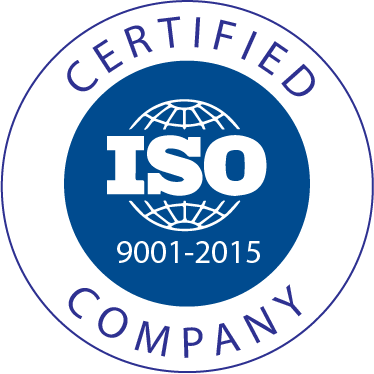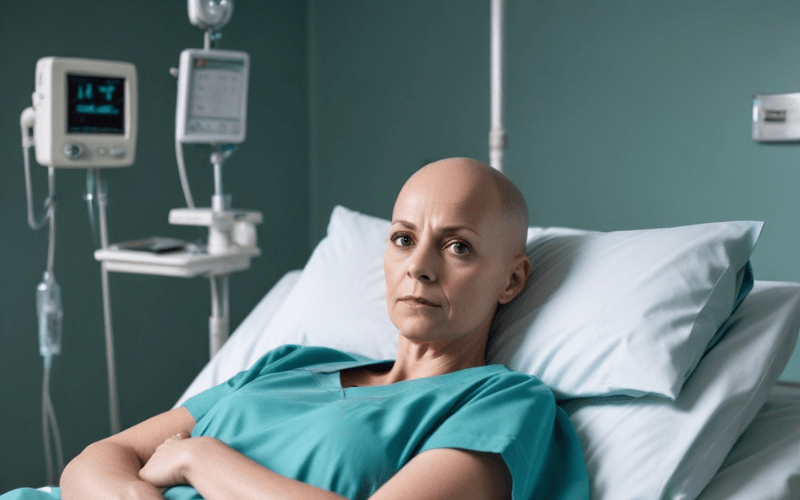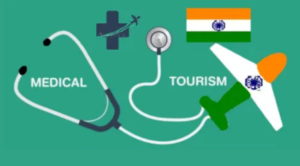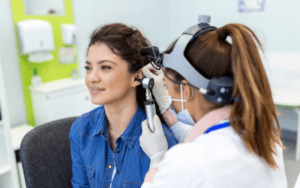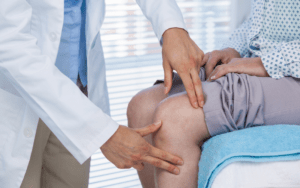Skin cancer treatment cost in India attracts foreign patients due to its affordability for individuals grappling with this diagnosis. Understanding the economic landscape of skin cancer treatment in India is crucial for making well-informed healthcare choices. This blog aims to provide information about the intricacies of skin cancer treatment costs, the various types of skin cancer, available treatment options in India, diagnostic tests, precautions, and why foreigners opt for India as their destination for skin cancer treatment.
Understanding Cancer and Its Available Treatments in India
India, renowned for its vast and diverse population, encounters formidable hurdles in its battle against cancer. With a populace exceeding a billion, the healthcare infrastructure of the nation confronts significant strains in addressing the multifaceted dimensions of cancer care. Despite skin cancer’s relatively lower prevalence compared to other malignancies, its impact remains profound, necessitating substantial allocations of resources and expertise for diagnosis and treatment. As such, the burden on healthcare resources persists, exacerbated by the intricate nature of addressing this cancer.
Although skin cancer may not dominate the cancer landscape in India, its presence cannot be understated. The complexities inherent in diagnosing and treating this condition underscore the need for a comprehensive approach to healthcare delivery. Furthermore, with the ongoing growth and aging of the population, the incidence of skin cancer, along with other cancers, is expected to increase. This emphasizes the need for proactive measures to improve cancer prevention, diagnosis, and treatment strategies within the diverse healthcare system of India.
Skin Cancer and Its Causes in People
Skin cancer is a prevalent malignancy affecting the outermost layer of the skin. Skin cancer commonly arises from excessive exposure to ultraviolet (UV) radiation, either from the sun or artificial sources such as tanning beds. The three primary forms are basal cell carcinoma, squamous cell carcinoma, and melanoma, the latter being the most fatal. Symptoms may manifest as alterations in moles, skin growths, or persistent non-healing sores. Prevention strategies entail adopting sun protection practices like using sunscreen, wearing protective clothing, and steering clear of peak sun exposure times. Early detection through regular skin checks and prompt medical attention significantly improves prognosis. Treatment options range from surgical removal to chemotherapy or targeted therapy, depending on the type and stage of cancer.
Causes
- UV Radiation Exposure: Extended exposure to ultraviolet (UV) radiation emitted by sunlight stands as the predominant catalyst for skin cancer. This radiation inflicts damage upon the DNA within skin cells, instigating mutations capable of instigating the growth of cancerous tissues.
- Sunburns: Intense or frequent sunburns increase the risk of skin cancer, especially in childhood or adolescence when the skin is more sensitive to UV damage.
- Indoor Tanning: Artificial sources of UV radiation, such as tanning beds and sunlamps, also contribute significantly to developing skin cancer.
- Genetics: Family history and genetic predisposition play a role, with individuals having a family history of skin cancer being at higher risk.
- Immunosuppression: Weakened immune systems, whether due to medical conditions like HIV/AIDS or immunosuppressive medications, can increase susceptibility to skin cancer.
- Environmental Factors: Being exposed to certain chemicals like arsenic or undergoing radiation therapy for past cancers can raise the risk of skin cancer.
How Does Skin Cancer Look Like?
Skin cancer presents itself in diverse ways, making it crucial to recognize its various manifestations. One standard indicator is irregularly shaped moles or spots on the skin. Additionally, changes in the size, shape, or color of existing moles could signal potential malignancy. Moreover, lumps or growths with a shiny, pearly appearance may indicate the presence of skin cancer. It is important to note that these symptoms may vary depending on the type of skin cancer, with melanoma often exhibiting distinct characteristics such as asymmetry, irregular borders, varied coloration, and a diameter more significant than a pencil eraser. Consistent self-checks and immediate medical assessment of any worrisome alterations in the skin can facilitate early detection and treatment of skin cancer, thereby enhancing patient outcomes.
Types of Skin Cancer
Types of skin cancer encompass a spectrum of conditions, each with distinct characteristics and implications for diagnosis and treatment:
- Basal Cell Carcinoma (BCC): This prevalent form of skin cancer manifests as a flesh-colored or pearl-like bump on the surface of the skin. While it rarely metastasizes, it can cause disfigurement if left untreated.
- Squamous Cell Carcinoma (SCC): Representing a substantial proportion of skin cancer incidences, SCC typically manifests as a firm, red nodule or a scaly, crusted patch. Though typically slow-growing, SCC can spread to other areas of the body if not addressed promptly.
- Melanoma: Recognized as the most aggressive type of skin cancer, irregular borders and various colors within the lesion characterize melanoma. It can rapidly spread to other organs, posing a significant risk to health and survival if not detected and treated early.
Understanding these distinctions aids in early detection and appropriate management of skin cancer, emphasizing the importance of regular skin examinations and prompt medical attention for suspicious lesions.
Skin Cancer Treatment in India
In India, a variety of treatment options are available for skin cancer, tailored to the specific characteristics of the disease:
- Surgery: Various surgical approaches are employed, such as excisional surgery, which entails removing the tumor along with a margin of surrounding healthy tissue; Mohs surgery, involving the meticulous removal of cancerous tissue layers while preserving healthy tissue; and cryosurgery, which employs extreme cold to eradicate cancer cells.
- Radiation Therapy: High-energy radiation beams are directed at the cancerous area to kill cancer cells or inhibit their growth. This is particularly useful for tumors in sensitive or difficult-to-reach areas where surgery may be challenging.
- Chemotherapy: Medications are given either orally or intravenously to eradicate cancer cells or hinder their capacity to proliferate and divide.
- Immunotherapy: This therapy enhances the immune system of the body, enabling it to identify and combat cancer cells more efficiently, providing a focused strategy for treatment.
- Targeted Therapy: Medications are crafted to precisely aim at molecules or pathways within cancer cells, disrupting their growth and survival mechanisms, while minimizing harm to healthy cells.
By offering a range of treatment options, healthcare providers in India can provide personalized care to individuals with skin cancer, ensuring the best possible outcomes based on the type, stage, and other relevant factors of cancer.
Diagnostics Tests for Skin Cancer in India
In India, diagnosing skin cancer involves employing a range of diagnostic tests, each offering unique insights into the disease:
- CT scan: Using X-rays, Computed Tomography (CT) scans generate intricate cross-sectional images of the body, aiding in the identification of any dissemination or metastasis of cancerous lesions beyond the skin. This imaging modality assists healthcare professionals in determining the extent of cancer involvement and planning appropriate treatment strategies.
- Biopsy: A biopsy is when a tiny piece of tissue is taken from a suspicious area of the skin to be examined under a microscope by a pathologist. This procedure is crucial for confirming the presence of cancer cells, identifying the specific type of skin cancer, and assessing its aggressiveness.
- MRI Scan: A biopsy is when a tiny piece of tissue is taken from a suspicious area of the skin to be examined under a microscope by a pathologist. MRI scans are beneficial for evaluating deeper or more complex lesions, complementing other imaging modalities and aiding in accurate diagnosis and treatment planning.
By combining these diagnostic tests, healthcare providers in India can accurately diagnose skin cancer, enabling timely intervention and personalized treatment approaches tailored to the unique condition of each patient.
Economic Aspect of Skin Cancer Treatment Cost in India
In India, the economic aspect of skin cancer treatment costs is influenced by numerous factors, including the type and stage of cancer, the selected treatment methods, the quality of hospital facilities, and the geographic location of the healthcare provider. Although healthcare in India is generally more affordable than in Western nations, skin cancer treatment expenses can still constitute a significant financial burden. Nonetheless, the cost of treating skin cancer in India typically remains substantially lower compared to Western countries, rendering it an appealing option for patients looking for high-quality care at more affordable rates. This affordability, coupled with the availability of skilled medical professionals and advanced healthcare infrastructure in certain regions, underscores the growing reputation of India as a destination for medical tourism, particularly for individuals seeking cost-effective solutions without compromising the quality of treatment and care.
Factors
Numerous factors affect the cost of cancer treatment in India, potentially exerting a significant impact on the overall expenses of the patient:
Type and Stage of Cancer: Different types of cancer require distinct treatment approaches, and the cancer stage determines the complexity and duration of treatment. Advanced stages often necessitate more aggressive and prolonged therapies, leading to higher costs.
Treatment Modalities: The choice of treatment options, including surgery, chemotherapy, radiation therapy, immunotherapy, and targeted therapy, is crucial in determining costs. Some treatments, such as targeted therapy or immunotherapy, can involve expensive medications and specialized equipment, contributing to higher overall expenses.
Hospital Facilities: The quality of healthcare facilities and infrastructure directly affects treatment costs. Hospitals with advanced technologies, state-of-the-art equipment, and specialized cancer care units may charge higher fees for their services.
Doctor’s Fees: The expertise and experience of oncologists and other medical professionals in cancer treatment can influence costs. Highly skilled specialists may charge higher consultation and procedural fees.
Geographic Location: Treatment costs can vary based on the city or region where the healthcare facility is located. Urban areas with higher living costs and greater demand for healthcare services may have higher treatment expenses than rural areas.
Additional Services: Ancillary services such as diagnostic tests, imaging studies, medications, hospitalization, and post-treatment care also contribute to the overall cost of cancer treatment.
Considering these factors, patients and their families should carefully evaluate treatment options, seek transparent information about costs, and explore available financial assistance programs or insurance coverage to manage the economic burden of cancer treatment in India.
Precautions for Skin Cancer
Taking preventive measures can help reduce the risk of developing skin cancer:
- Seek Shade: To reduce exposure to UV radiation, it is best to limit direct sunlight exposure, especially between 10 am and 3 pm, when the sun’s rays are strongest.
- Wear Sun-Protective Clothing:opt for high Ultraviolet Protection Factor (UPF) ratings to shield the skin from harmful UV rays.
- Apply Sunscreen: Apply sunscreen that guards against both UVA and UVB rays and has an SPF of 30 or more to any exposed skin not covered by clothing. Remember to put more on every two hours or after swimming or sweating.
- Avoid Reflective Surfaces: Avoid surfaces like sand, water, and snow that reflect UV rays, intensifying exposure.
- Avoid Tanning Beds: Avoid using tanning beds because they emit UV radiation, which greatly increases the risk of developing skin cancer.
- Conduct Self-Examinations: Regularly examine your skin for any changes, such as new moles, changes in existing moles, or unusual skin growths. Consult a dermatologist promptly if any suspicious changes are noticed for early detection and intervention.
Why Do Foreigners Choose India for Skin Cancer Treatment?
Foreign patients often opt for skin cancer treatment in India due to several reasons:
- Cost-effectiveness: Skin cancer treatment in India is comparatively more affordable, even without insurance.
- Quality healthcare: India boasts world-class hospitals and skilled healthcare professionals offering advanced treatment options.
- Holistic approach: Many healthcare facilities in India provide comprehensive care, including emotional and psychological support.
- Medical tourism: India’s abundant cultural heritage and array of tourist attractions render it an appealing choice for medical tourists in search of both treatment and relaxation.
Understanding the economic aspects of skin cancer treatment costs in India is crucial for individuals seeking quality healthcare at affordable prices. With various treatment options, diagnostic tests, and preventive measures available, India is a viable destination for skin cancer treatment, catering to domestic and international patients.
Conclusion
Unimediks is committed to providing accessible and affordable healthcare for skin cancer patients. We provide a variety of comprehensive services at competitive prices through our extensive network of respected healthcare providers across India. Our priority is ensuring patients receive the necessary care without enduring financial strain. Contact us today to explore the complete range of our services and begin your journey towards recovery from skin cancer, reassured that you are in skilled and caring hands. Visit https://www.unimediks.com/

